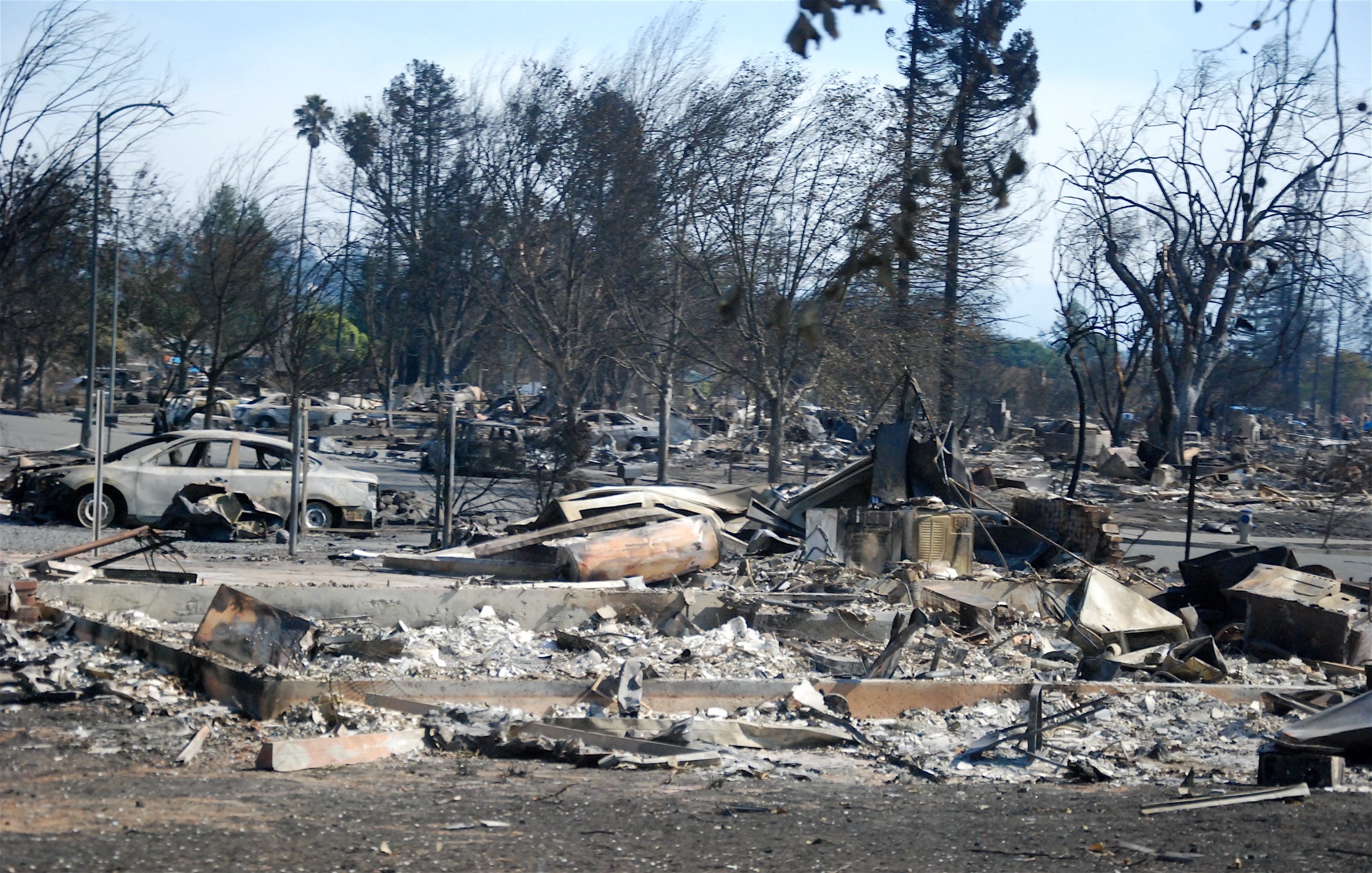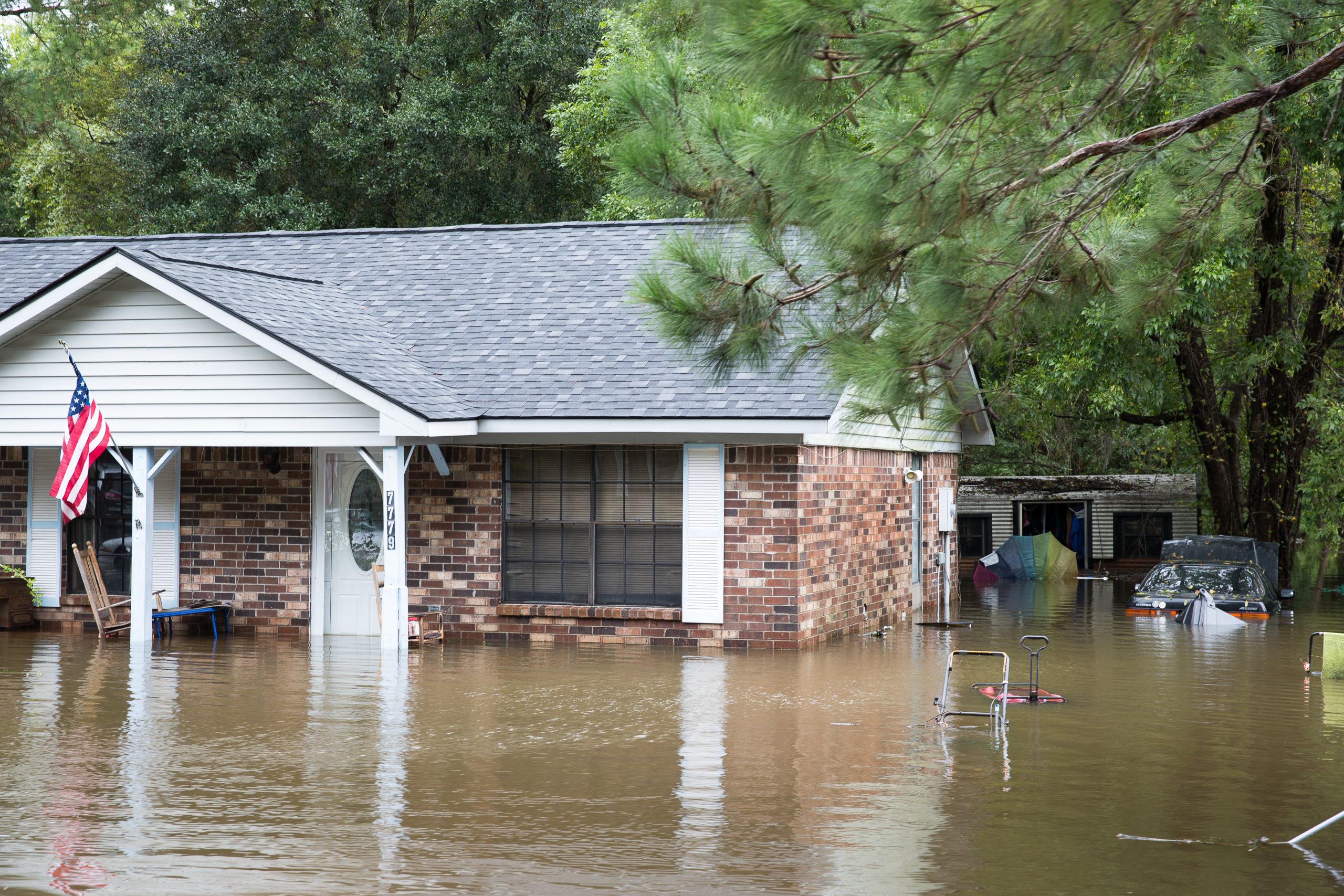Bluelining: How Climate Change is Driving an Insurance Crisis (Bluelining Part 1 of 2)
Bluelining emerges in insurance as another financial hardship for low-income and low-wealth communities
By Jessica Garcia, senior policy analyst for climate finance
The year 2023 revealed that bluelining is in full swing, and this development – like many related to the climate crisis – is nothing to celebrate.
Financial institutions like insurers, banks, and mortgage lenders, might raise prices or simply withdraw from major markets they deem environmentally risky. If that sounds trivial, consider that in the case of property insurance we’re already seeing these exclusions cover entire states. The individual financial impacts are considerable, and often fall hardest on those in low-income and historically disadvantaged communities.
Originally, the “blue” in bluelining referred to flood risks, but it now includes other climate-related disasters like wildfires, hurricanes, and severe thunderstorms, all of which are driving private-sector decisions. Severe thunderstorms, in fact, were responsible for about 61% of insured natural catastrophe losses in 2023.

Negative physical, and associated financial impacts, from disasters disproportionately harm low-income and formerly redlined communities. Redlining occurred where banks unjustly restricted access to capital, as a result of the federal government drawing red lines on maps around Black, Brown, and immigrant neighborhoods deemed “hazardous” to property values.
Now, we’re seeing overlap between formerly redlined communities and where insurers are pulling coverage in climate-stricken areas. One of the many consequences of redlining still being experienced today, relates to decades of disinvestment in housing and critical infrastructure for redlined communities. With poor building conditions, fewer or substandard sewers, levees, trees, and green spaces that could protect communities from climate-related hazards, particularly flooding and heat, these communities are more vulnerable to climate change.
A 2021 Redfin study found that modern flood risk maps show overlap with redlining maps, with 8.4% of homes in neighborhoods historically deemed “undesirable” (i.e., redlined, non-white communities) facing high flood risk compared with 6.9% of communities located in neighborhoods deemed “desirable” at the time (i.e., white communities). Summer temperatures have also been found to be an average of 5 degrees hotter in formerly redlined areas, partly due to the lack of trees, which mitigate both extreme heat and flood risk, and more pavement, which attracts heat and drives up temperatures. Lower wealth, another consequence of redlining, also makes investments in climate resilience or the ability to bounce back after disasters nearly impossible. These communities now face more climate-related financial risk, which can result in financial institutions withdrawing insurance or other services from them.

The insurance crisis of 2023 demonstrated how rapid and devastating bluelining can be. For instance, some insurers in California are now refusing to write new homeowner policies, while others in Florida and Louisiana have become insolvent, leading to steep rate hikes for policyholders in those states. Unlike banks, insurers aren’t federally regulated but are overseen by state offices. The Federal Insurance Office — which monitors risks in the insurance markets — is taking steps in this direction by requesting data from insurers, but other regulators need to follow suit by collecting and publishing more data on climate-related financial risks.
Even communities that might feel insulated from climate change are not. Nearly twice as many properties may be susceptible to flood damage than was previously thought. Rising insurance premiums will be widespread. Many regions in the U.S. will face climate hazards – serious disasters and a chronically warming climate – in the next decade. Although news headlines typically focus on insurance failures or withdrawals in large states like California and Florida, smaller states, like Arkansas, are also experiencing rising property insurance premiums.
The problem extends beyond insurance. For instance, updated flood maps can lead to reduced mortgage lending in affected areas, particularly impacting lower-income individuals.
Struggles to find affordable homeowners insurance in climate vulnerable areas might hurt a household’s ability to pay their mortgage payments and the property insurance their lender requires; consumer credit card and other debt that may accumulate when dealing with insurance deductibles, disaster repair, and recovery; and, for lenders this could mean higher risks of default and delinquency rates on mortgage, auto, or other payments. Climate change is already squeezing household finances, and financial spirals will worsen for many consumers as climate change continues, and the possibility of a climate-induced financial crisis increases.
While one arm of a company is investing in, underwriting, and insuring carbon-intensive projects like fossil fuel expansion, the other arm is pulling insurance coverage in areas experiencing climate disasters fueled by that financing.
Many financial institutions also have a hand in creating the crisis by financing projects that fuel climate change — including the insurance companies that have stopped writing new policies for California homeowners. While one arm of a company is investing in, underwriting, and insuring carbon-intensive projects like fossil fuel expansion, the other arm is pulling insurance coverage in areas experiencing climate disasters fueled by that financing. In other words, insurance companies are dumping the problems they help create onto the public by pulling out of major markets or drastically raising rates — often with little to no warning.
Financial institutions, including insurers, must reduce their financing of climate catastrophes by implementing credible net zero transition plans, which should entail a phase out of underwriting, investing, insuring, and lending to fossil fuels.
A struggling insurance market as a consequence of the growing climate crisis will only be the first domino to fall in the financial system. Financial policymakers must quickly identify the scope and scale of the insurance crisis—especially in vulnerable communities—if they are to protect households and prevent the rest of the climate dominos from cascading across the financial system.
For more on how to tackle the problem of bluelining, see this blog on policy solutions (Bluelining Part 2 of 2).

